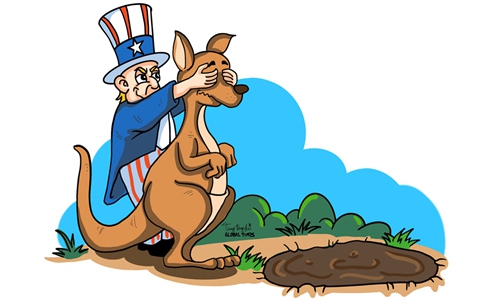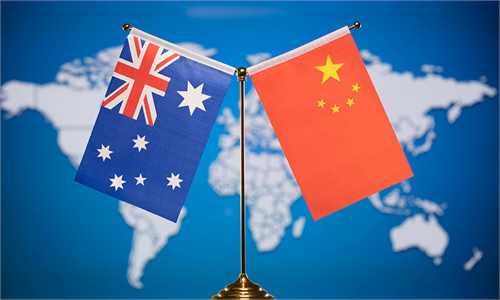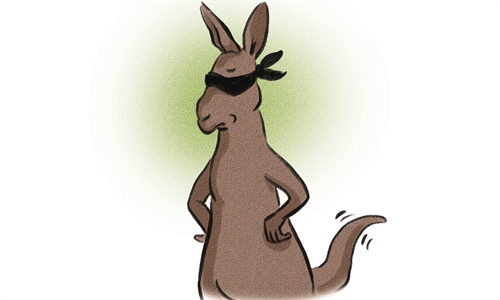
Illustration: Liu Rui/GT
A recent analytical article by The New York Times (NYT) highlighted the current China-Australia cartoon spat as an example of the trepidations many countries are now discussing in relation to diplomacy with Beijing.Australian Prime Minister Scott Morrison's reaction to a cartoon post condemning Australian troops' murder of civilians in Afghanistan that was tweeted by Chinese Foreign Ministry spokesperson Zhao Lijian fostered sizzling debate.
The NYT article said even as Morrison demanded for an apology from China, he also seeks "happy coexistence" with China. It actually reflects Australia's anxiety and insecurities about the declining US and China's "tightening vise" in world affairs. This is the paradox many countries are wondering about with their China relations, it said.
First of all, it has to be clear that such a China "vise" does not exist. To be exact, the "vise" only exists in the countries who are US allies, including the Five Eye alliance, as only they are the ones who always stand at the anti-China frontline amid China-US confrontations. Yet they ironically yearn for the huge benefits that China can bring to them.
Countries who are not tied to the US chariot, such as most developing countries in the world, have no anxieties of a "vise" when dealing with China. In fact, not taking sides between China and the US gives them more freedom of choice. They can cooperate with China and the US more freely and flexibly. They can move between the two big powers with greater ease and less limits.
It can be seen that during the current China-US confrontation, even if the US forced some countries to take sides, most developing countries were unwilling to do so.
An example of this was Sri Lanka and the Maldives' reaction when Pompeo visited.
The world is increasingly aware that diversity and inclusiveness are the core that promotes the world development - forming aggressive alliances is outdated.
Countries who insist on following the US' baton to confront China have to know that it is they who place themselves in an awkward position. Now, let's talk specifically about Australia. It is clear to all that Australia has been the pawn in the US regional strategy in the recent years, especially during the Trump administration. In the US' campaign to attack Huawei, Australia fired the first shot and then took credit for the US. When it comes to confronting China, Australia cannot claim to be the US's number two ally.
After suffering great losses from deteriorating relations with China, Australia bit back and accused China of bullying it. China has seen this type of Aussie trick before.
In Morrison's reaction to the cartoon post, he first fired fierce accusations at China and then tried to dial down the PR fiasco fires to save the situation. This shows that Beijing's reasonable and well-grounded response left no room for Canberra to hit back.
Moreover, although Australia is still tied to the US, the country is clear that China's role in its economic development is irreplaceable. It cannot afford to completely break ties with China. In short, the awkward situation that Australia is in simply resulted from the fact that it provoked China, but was unwilling to pay for the damage.
The NYT article tried to magnify the friction between Australia and China to sensationalize the matter - making it seem China has the whole world in a "vise-like grip." This further advances the paranoid "China threat theory" that has been circulating in media ecosystems in the West. It illuminates the deep anxiety in the West about its inability to contain China's rise.
It also begs a question: how are most countries in the world really doing with China? Quite honestly, most have harmonious ties. China always reaches out to make friends and partnerships instead of forging iron-clad anger alliances. China's strategy of peaceful international co-existence overshadows the US' strategy of playing little boys games - looking for invisible enemies as it maps out dreams of global domination by all means necessary.
The author is deputy director of the Department for International and Strategic Studies, China Institute of International Studies. opinion@globaltimes.com.cn




